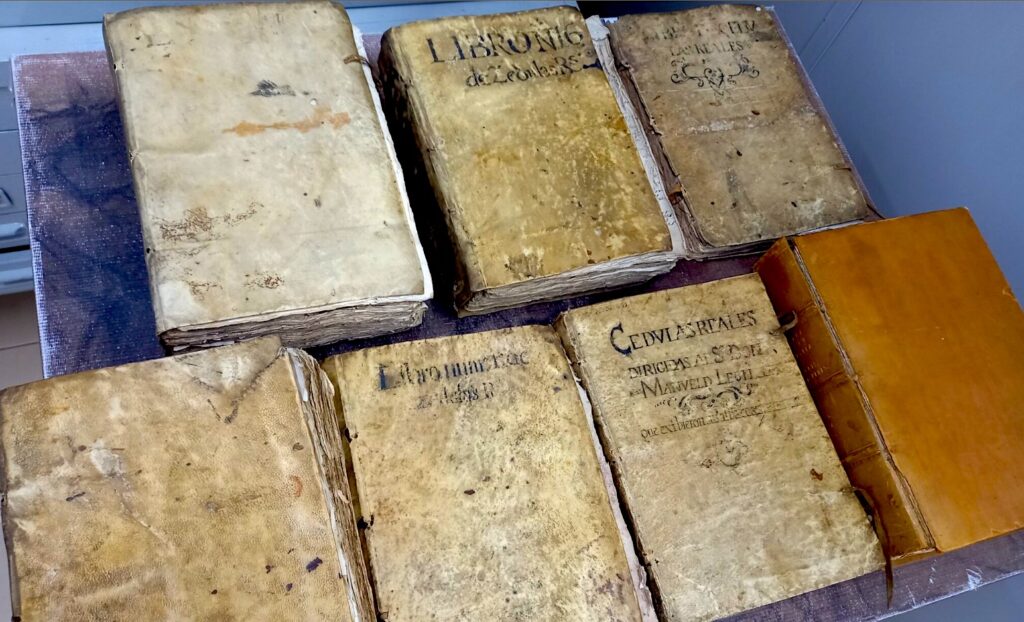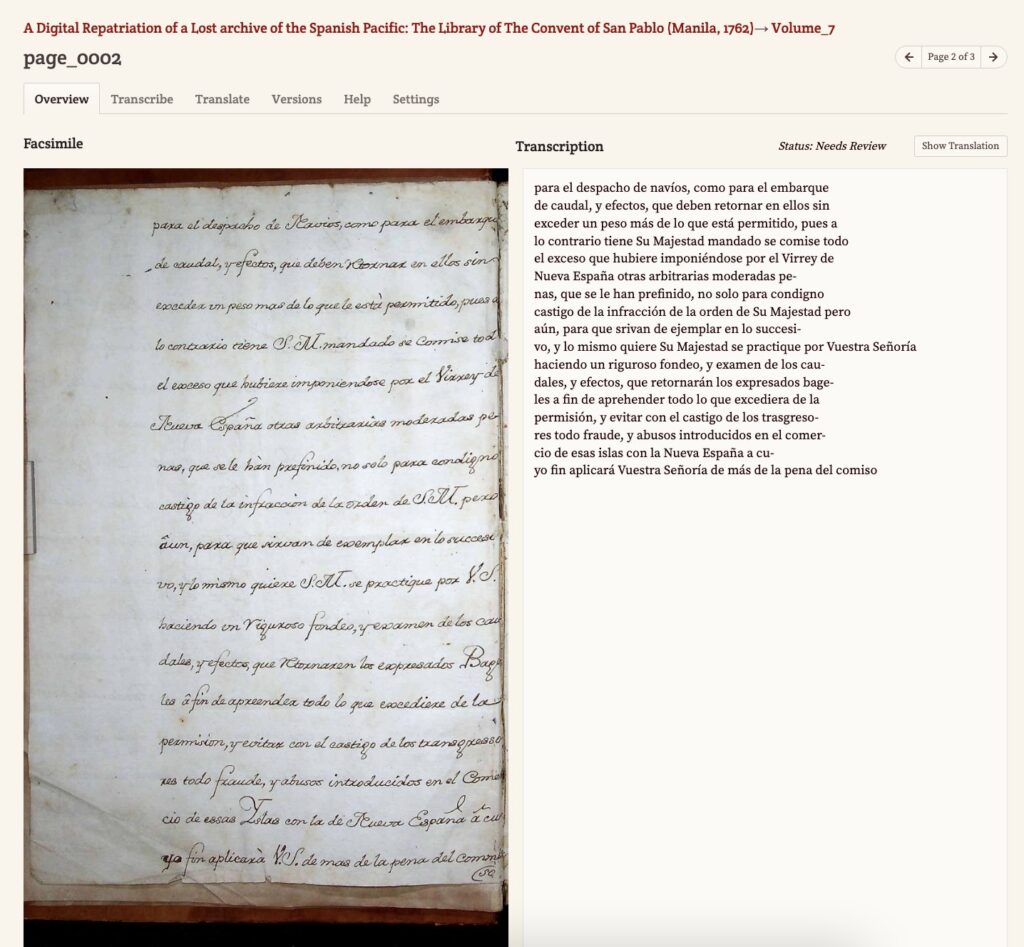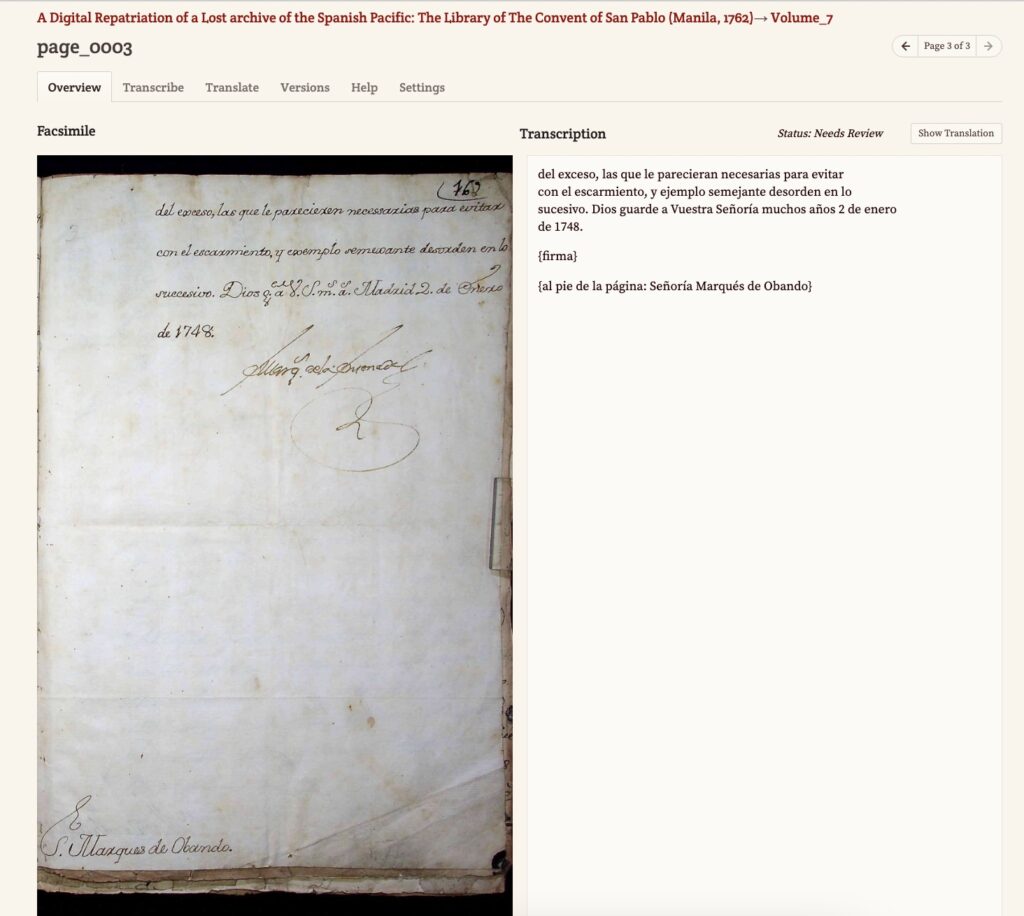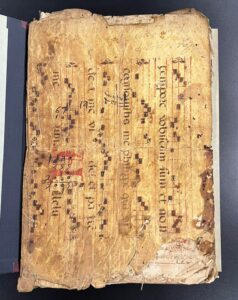 When the 1762 project team first encountered the Philippine manuscripts at the Lopez Library, we had a lingering doubt about one of the volumes in the Sotheby’s lot that Mr. Eugenio Lopez purchased in 1966. Unlike the six other volumes that matched the auction catalogue description perfectly, the manuscript entitled Copia del testamento de Don Luis Enrique de Guzmán, Alcalde Ordinario de la ciudad de Manila, written in 1622, seemed out of place. A copy of Don Luis Enrique de Guzmán’s will, it is bound in what appeared to be a fragment of a musical score printed on leather. Additionally, some loose folios from 1798 and 1804, produced in Acapulco, were inserted at the end, and the will was dated much earlier than the multi-volume cedularios. These discrepancies made us question whether this volume was indeed part of the Sotheby’s lot. Nevertheless, we included it in the 1762 digitization project just in case.
When the 1762 project team first encountered the Philippine manuscripts at the Lopez Library, we had a lingering doubt about one of the volumes in the Sotheby’s lot that Mr. Eugenio Lopez purchased in 1966. Unlike the six other volumes that matched the auction catalogue description perfectly, the manuscript entitled Copia del testamento de Don Luis Enrique de Guzmán, Alcalde Ordinario de la ciudad de Manila, written in 1622, seemed out of place. A copy of Don Luis Enrique de Guzmán’s will, it is bound in what appeared to be a fragment of a musical score printed on leather. Additionally, some loose folios from 1798 and 1804, produced in Acapulco, were inserted at the end, and the will was dated much earlier than the multi-volume cedularios. These discrepancies made us question whether this volume was indeed part of the Sotheby’s lot. Nevertheless, we included it in the 1762 digitization project just in case.
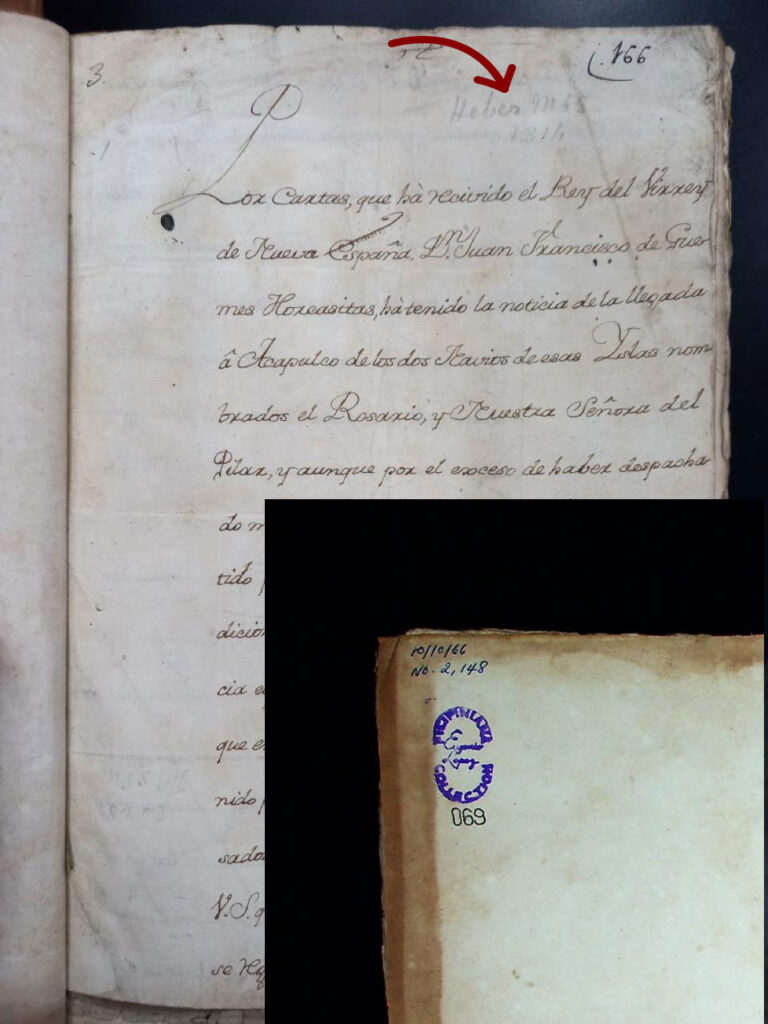 In May 2024, in the middle of optimizing the Lopez scans, segmenting the compiled folios into separate accession items, recataloguing them for greater findability, and uploading them to Princeton’s IIIF servers — the Senior Librarian at the Lopez, Ms Carina Samaniego, sent us an intriguing email.
In May 2024, in the middle of optimizing the Lopez scans, segmenting the compiled folios into separate accession items, recataloguing them for greater findability, and uploading them to Princeton’s IIIF servers — the Senior Librarian at the Lopez, Ms Carina Samaniego, sent us an intriguing email.
She wanted to consult about a volume of manuscripts that she had just found . She attached a few photos showing the spine and the first few pages. She also alerted us to the first page, where there was a handwritten note: “Heber Mss. 1314.”
A flurry of emails followed.
We all knew what Heber meant in relation to the project. The Philippine manuscripts that were looted from the San Agustin convent and later acquired by Alexander Dalrymple were sold as an entire lot in a massive auction in 1809. Richard Heber (5 January 1773 – 4 October 1833) a famous English book collector, was the first to buy the lot. It was later sold to Thomas Thorpe (1791-1851) then to Sir Thomas Philipps (1792-1872) going through several other hands until the auction by Sotheby and Co. on June 28, 1966. Mr Eugenio Lopez bought Sotheby’s Lot No. 525 and this was later accessioned into the Lopez library on October 10, 1966 ( see inset photo above).
“Wow, I’m having goosebumps! Yes, this has a different binding and was placed in an unlabelled box. It was really just a random find as I was looking for something else. The moment I saw the name Heber, I knew I had read it somewhere…”
—Carina Samaniego, Lopez Library Senior Librarian, from an email dated May 23, 2024


Back in January 2023, when Lopez Librarian Ms. Mercy Servieda and Regalado Trota Jose first uncovered the uncatalogued manuscripts (read about that story here) we didn’t think to ask if there might be another compilation of cedulas bound in calfskin.
The Sotheby’s lot description was clear: “One volume badly wormed, six volumes bound in vellum, one in 19th-century calf, MSS 8477–9, 8481, 8483–4, 8496. Folio 1663-77, 1688-95, 1707-13, 1748-52.”
It probably didn’t help that the later rebinding of what was most likely once bound in vellum had labeled the cedulario in Latin. Now titled “Carte regum Hispaniae de Insulis Philippinis” in gold-tooled letters, the volume just had to wait another year before being identified as part of the Sotheby’s lot of Philippine manuscripts.
Prof. Christina Lee confirmed the discovery, noting that she recognized similar signatures from the charters and orders of the previous volume (LMM Accession No. 070), dated 1707-1713. The seventh volume covers the dates from 1748-1752.
Next Steps
The 7th cedulario was promptly scanned by the Lopez Library and sent out to the project’s digital repository for technical assessment (clarity, resolution and image cropping). After a few re-scans, Ms Samaniego added some metadata ( unique identifier, dimensions, general description etc.) This additional volume is now scheduled to be ingested into the Lopez repository in Princeton’s IIIF server.
Prof Anna Marie Sibayan of the Department of European Languages at the University of the Philippines Diliman, is now working on segmenting the cedulas into their legajos and providing brief descriptions for each segment. Using the 1762 Project’s transcription platform on From the Page , she has transcribed and translated the first folio in the volume.
(See samples of all the other manuscripts that the 1762 transcription team has been working on here: From the Page: A Digital Repatriation.)
Just a snippet of the Prof Sibayan’s translation of page 1 of the 7th Cedualrio.
The letters, which the King has received from the Viceroy of New Spain, Don Juan Franciso de Guemes Horcasitas, carry news of the arrival of two ships in Acapulco from those islands named Rosario and Nuestra Señora del Pilar, for having sent much more than what this trade allows.Could you, Your Highness, cease to approve this expedition, considering the financial difficulties that the trade suffers from these islands. At the moment, the representative appointed in your name, has come this time to approve the consignment of the aforementioned two ships. This brings me to take precautionary measures, that Your Honor, henceforth, stipulate that this trade comply completely to what it has been granted.. ( Signed by Señora Marques de Obando, 1748.)
Along with the 6 other volumes from Lopez and the rest of the reunited materials from the Lilly Library, SOAS, the British Library and Kings College, all digitized texts will be made available on the 1762 open-access aggregated platform by September 2024.
